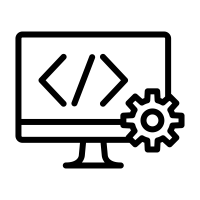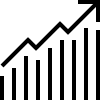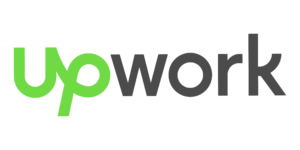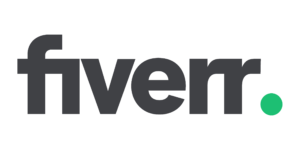On-Page SEO
Get Expert On-Page SEO Services For Your Website!
Is your website struggling to be seen? It’s time to give your online presence a boost. Bonafide Technologies offers expert On-Page SEO services to skyrocket your rankings. We know that the foundation of a successful online presence starts with your website. Our On-Page SEO strategies are designed to optimize every aspect of your site, ensuring it meets search engine standards and ranks higher in search results.
Ready to dominate the search results? Let’s get started!
Get an Instant Quote for your Website
Why Choose Bonafide Technologies For On-Page SEO
Our On-Page SEO Services
-
 Complete Website Audit
Complete Website Audit
-
 Keyword Research and Optimization
Keyword Research and Optimization
-
 Meta Tag Optimization
Meta Tag Optimization
-
 Content Optimization
Content Optimization
-
 URL Structure Optimization
URL Structure Optimization
-
 Internal Linking Strategy
Internal Linking Strategy
-
 Technical SEO Refinement
Technical SEO Refinement
-
 Image and Media Optimization
Image and Media Optimization
-
 User Experience (UX) Enhancements
User Experience (UX) Enhancements
-
 Schema Markup and Structured Data
Schema Markup and Structured Data
-
 Analytics and Reporting
Analytics and Reporting
Complete Website Audit
Before diving into optimization, we conduct a thorough audit of your website. This audit is the backbone of our on-page SEO strategy, enabling us to identify existing issues, opportunities, and areas for improvement.
We assess the technical health of your website, including site speed, mobile responsiveness, URL structure, and more. We analyze your content to ensure it is engaging, informative, and optimized for your target keywords.
The primary purpose of this audit is to gain a clear understanding of the site’s current status and to uncover areas that require improvement.
Key aspects of our website audit include:
- Technical SEO Analysis: Checking for issues like broken links, slow page loading speed, crawl errors, and mobile-friendliness.
- Content Quality Assessment: Evaluating the relevance, uniqueness, and readability of the content on each page.
- On-Page Elements Review: Analyzing elements like meta tags, header tags, URL structure, and internal linking.
- Competitor Analysis: Studying competitors’ SEO strategies to identify improvement opportunities.
Keyword Research and Optimization
It involves identifying your potential customers’ words and phrases when searching for products or services like yours. These keywords are then strategically placed throughout your website to ensure that search engines recognize your site as a relevant result for those queries.
We use advanced tools and techniques to identify both short-tail and long-tail keywords that are relevant and have a high potential for driving targeted traffic to your site. Once we have identified the most effective keywords, we incorporate them into various elements of your website, including your content, meta tags, headers, and URLs.
The process includes:
- Identifying Primary and Secondary Keywords: We focus on finding the most relevant primary keywords that represent the main theme of the content. Secondary keywords, also known as LSI (Latent Semantic Indexing) keywords, are also identified to support the primary keywords.
- Analyzing Keyword Competition: We examine the competition level of each keyword to determine its feasibility in ranking. Keywords with high search volume and low competition are prioritized.
- Understanding User Intent: We go beyond just identifying keywords; we analyze the intent behind the search queries. This ensures that the content we create or optimize aligns with what users are genuinely looking for.
Meta Tag Optimization
Meta tags are snippets of text that describe a page’s content; they don’t appear on the page itself but in the page’s code. The most critical SEO meta tags are the title and meta descriptions. A well-optimized title tag should include the primary keyword and be compelling enough to encourage clicks.
While meta descriptions don’t directly impact rankings, they significantly affect click-through rates. A well-crafted meta description should concisely summarize the page content, include the target keyword, and entice users to visit the page.
Title Tags: We craft compelling and keyword-rich title tags that accurately represent the content on the page. Each title tag is unique and follows best practices in terms of length and keyword placement.
Meta Descriptions: Our team writes persuasive meta descriptions that not only include the target keywords but also encourage users to click through to the website. Meta descriptions act as a preview of the page content and can significantly impact click-through rates (CTR).
Content Optimization
At Bonafide Technologies, content should be optimized not just for search engines but also for the user experience. We focus on creating informative, engaging content aligned with your target audience’s needs. This includes blog posts, articles, product descriptions, and landing pages that provide valuable insights and answers to common questions.
We structure your content using headings (H1, H2, H3) to make it easy to read and navigate. We incorporate internal links within your content to guide users to related pages, improving navigation and distributing link equity across your site.
Content optimization involves:
- Improving Content Relevance: We ensure that the content is relevant to the target keywords and provides valuable information to the users.
- Content Structuring: Proper structuring of content using headers (H1, H2, H3, etc.) makes it more readable for both users and search engines. We strategically use headers to organize content and make it easy to navigate.
- Keyword Density and Placement: We optimize the placement of primary and secondary keywords within the content, ensuring that they are used naturally and do not appear to be stuffed.
- Creating Fresh Content: For clients needing new content, our skilled content writers develop high-quality, SEO-friendly articles, blog posts, product descriptions, and other web content.
URL Structure Optimization
Clean, descriptive URLs provide context about the page’s content and make it easier for search engines to index your site. At Bonafide Technologies, we ensure your URLs are optimized for SEO and usability.
We create URLs that accurately describe the page’s content and include relevant keywords. We ensure that your URLs reflect the hierarchy of your site’s content, making it easier for both users and search engines to navigate.
Our URL optimization strategies include:
- Creating SEO-Friendly URLs: Short, descriptive URLs that include the primary keyword and accurately reflect the page content.
- Avoiding Special Characters and Numbers: Keeping URLs simple by avoiding unnecessary special characters and numbers.
- Maintaining Consistency: Ensuring that the URL structure is consistent across the website, making it easier for search engines to crawl and index.
Internal Linking Strategy
Internal linking refers to linking from one page on your website to another. Links help search engines understand the structure of your site and establish a hierarchy of importance among your pages. entire process, ensuring successful partnerships.
To improve the reading experience for readers and increase the reliability of the page with search engines, we strategically interlink the content. It also makes the website more accessible to navigate.
Our internal linking strategy includes:
- Creating Contextual Links: Adding relevant internal links within the content to help users navigate to related pages.
- Using Descriptive Anchor Text: Ensuring that the anchor text used for internal links is descriptive and contains target keywords.
- Optimizing Link Structure: Avoid over-optimization and ensure that internal linking is natural and adds value to the user.
Technical SEO Refinement
Technical SEO is the backbone of a well-optimized website. It involves fine-tuning the technical aspects of your site to ensure that search engines can easily crawl, index, and rank your content. We enhance your website’s loading speed, a critical factor for user experience and SEO rankings.
With more users accessing the web via mobile devices, we ensure your website is fully optimized for mobile responsiveness. We refine your URL structure to make it clean, descriptive, and SEO-friendly. We create and manage your XML sitemap and robots.txt files to guide search engines in indexing your site efficiently.
These include:
- XML Sitemap Creation and Optimization: Ensuring search engines can easily crawl and index the website’s pages.
- Robots.txt Optimization: Guiding search engines on which pages to crawl or avoid.
- Canonical Tags Implementation: Preventing duplicate content issues by guiding search engines to the original page.
Image and Media Optimization
Images and multimedia elements are essential for a visually appealing website but can impact your site’s performance and SEO. We ensure all images have descriptive, keyword-rich alt text, improving accessibility and SEO.
We compress images to reduce file sizes without compromising quality, enhancing site speed and user experience. We optimize video content for SEO by using appropriate tags, descriptions, and transcripts.
Our image optimization process involves:
- Using Descriptive File Names: Renaming image files with descriptive keywords that relate to the content of the page.
- Optimizing Alt Text: Writing keyword-rich alt text that describes the image and its relevance to the content. This helps search engines understand the context of the image and improves accessibility.
- Compressing Images: Reducing the file size of images without compromising quality to ensure fast page loading speed.
User Experience (UX) Enhancements
A positive user experience is crucial for retaining visitors and encouraging conversions. We simplify your website’s navigation to ensure users can easily find what they want.
We strategically design and place CTAs to guide users toward desired actions, such as purchasing or filling out a contact form. We optimize your site for mobile users, ensuring a seamless experience across all devices.
Our UX optimization strategies include:
- Improving Website Navigation: Ensuring that the website’s navigation is intuitive and user-friendly.
- Optimizing for Readability: Using clear fonts, adequate spacing, and concise paragraphs to make the content easy to read.
- Enhancing Call-to-Action (CTA) Buttons: Designing compelling CTAs that encourage user interaction and conversions.
Schema Markup and Structured Data
Schema markup is a form of microdata that helps search engines understand your content better. By implementing schema markup, we enhance your website’s visibility in SERPs with rich snippets and other features.
We add schema markup to your website to provide search engines with detailed information about your content. We ensure your data is correctly implemented and adheres to best practices.
Our schema markup implementation includes:
- Adding Relevant Schema Types: Using appropriate schema types (e.g., Product, Article, FAQ) to enhance search engine visibility.
- Enhancing Rich Snippets: Implementing schema markup to enable rich snippets, which can improve CTRs by making search listings more informative and visually appealing.
Analytics and Reporting
Effective SEO is an ongoing process; tracking progress is essential to success. We provide detailed analytics and reporting to inform you of your website’s performance. We monitor and analyze your website’s traffic to identify trends, sources, and opportunities.
We track your keyword rankings to measure the impact of our SEO efforts. We set up and monitor conversion tracking to measure the effectiveness of your website in achieving business goals. Based on our analysis, we provide continuing recommendations to improve your website’s SEO performance further.
At Bonafide Technologies, we provide continuous monitoring and detailed reports to our clients, which include:
- Performance Tracking: Monitoring keyword rankings, organic traffic, bounce rates, and other key SEO metrics.
- Analyzing User Behavior: Using tools like Google Analytics to understand user behavior and identify areas for improvement.
- Providing Actionable Insights: Offering recommendations based on the latest data and trends to continuously improve SEO performance.
Get Your WordPress Website that Meets Your Expectations!
Contact Us Today
FAQs


